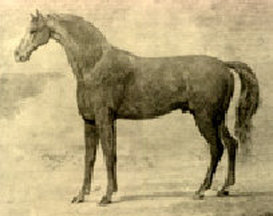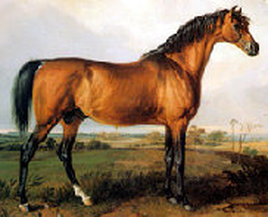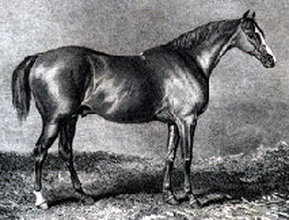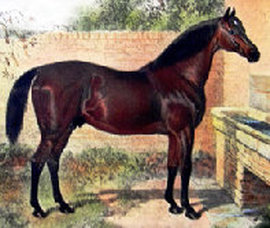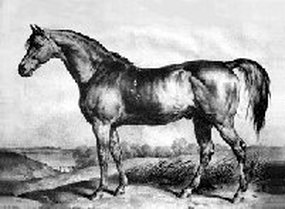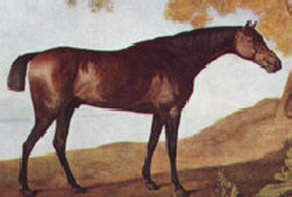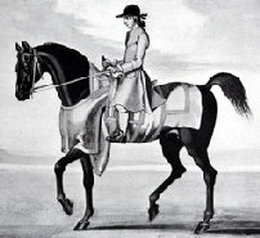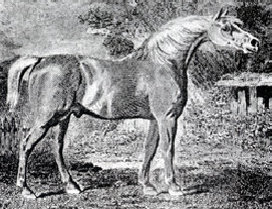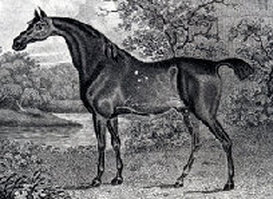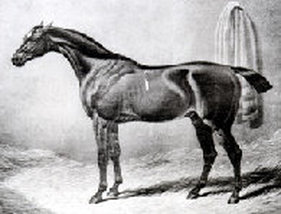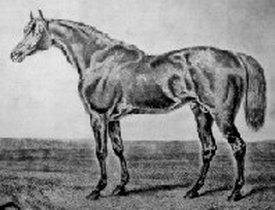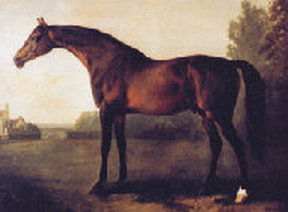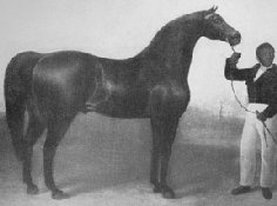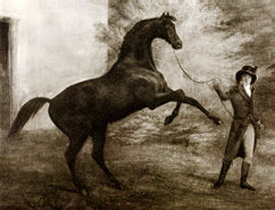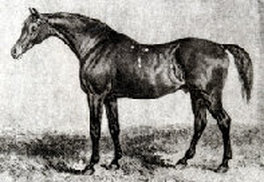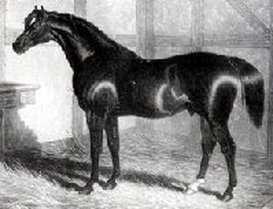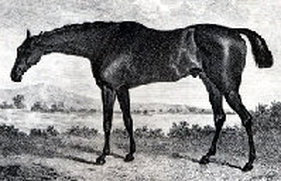FINE ENGLISH COARSERS
Meriwether Lewis and William Clark were the among the first to write a description of the horses they saw in the Native American herds of the Pacific Northwest-- the ancestors of and inspiration for today's Appaloosas. In an entry made February 15, 1806, Lewis and Clark compared the horses of the Nez Perce and related tribes to "Fine English Coarsers", and the finest horses from back home in New England. What exactly did they mean when they said that these native herds resembled "the best blooded horses in Virginia"?
Lewis and Clark would have been familiar with fine English Thoroughbreds that were being imported into, bred and raced in Virginia and surrounding states. There is no doubt that a "Coarser" (courser) was a swift, valuable race horse, and the racing horses and "blooded" horses of the time were Thoroughbreds. In other words, the horses of the PNW tribes were not being described as common, run of the mill, small weedy ponies. As if comparison to the best horseflesh of their homeland was not descriptive enough, Lewis and Clark also made note that these predecessors of the Appaloosa were "lofty, eligantly formed, active and durable..... and would make a figure in any country."
Here are artists' images and breeder, owner, and studbook descriptions of Thoroughbreds in England and the USA in the late 1700s and early 1800s-- the horses which Lewis and Clark were favorably comparing the horses of the PNW tribes to:
Lewis and Clark would have been familiar with fine English Thoroughbreds that were being imported into, bred and raced in Virginia and surrounding states. There is no doubt that a "Coarser" (courser) was a swift, valuable race horse, and the racing horses and "blooded" horses of the time were Thoroughbreds. In other words, the horses of the PNW tribes were not being described as common, run of the mill, small weedy ponies. As if comparison to the best horseflesh of their homeland was not descriptive enough, Lewis and Clark also made note that these predecessors of the Appaloosa were "lofty, eligantly formed, active and durable..... and would make a figure in any country."
Here are artists' images and breeder, owner, and studbook descriptions of Thoroughbreds in England and the USA in the late 1700s and early 1800s-- the horses which Lewis and Clark were favorably comparing the horses of the PNW tribes to:
|
HIGHFLYER 1774-1793
"He was easily the best horse of his day, winning... distances from two to above four miles"- Undefeated. SIR ARCHY 1805-1833
Bred and foaled in VA, earned the title "Goldolphin of America" because of his influence as a sire. "as a three year old measured over just 16 hands high." He was "A horse of commanding size, with great power and substance. He is eminently superior in all those points indispensable to the turf horse, and mainly contributory to strength and action. His shoulder, the most material part of the horse, is strikingly distinguished, being very deep,fairly mounting up to the top of the withers, and obliquely inclined to the hips. His girth is full and deep, back short and strong, thighs and arms long and muscular, his bone good. His front appearance is fine and commanding-his head and neck are well formed, the latter rising well out of his withers. Take Sir Archy upon the whole, and he has more size, power and substance than we often see combined in the full bred horse." SALTRAM 1780-c.1802
Imported to Virginia 1799, 15.3 hands, described as 'elegant, highly formed' MULEY foaled 1810
Said to have "larger bone and greater muscular power than any thoroughbred stallion in England." Sire of the 16 hand LEVIATHAN, successful U.S. sire PARTISAN 1811-1835
15.2 hands, was said to be "very muscular in form, without heaviness". "A beautiful short-legged horse, with a lovely head, straight hocks." SORCERER foaled 1796
he was described as a "horse of superior breed, good temper, good feeder, and able to stand work, which qualities he was said to impart to his stock. It was speculated that he derived his 16.1 hand size and considerable substance from Babraham." |
For references and more information on early Thoroughbreds, please visit tbheritage.com and bloodlines.net/TB .
